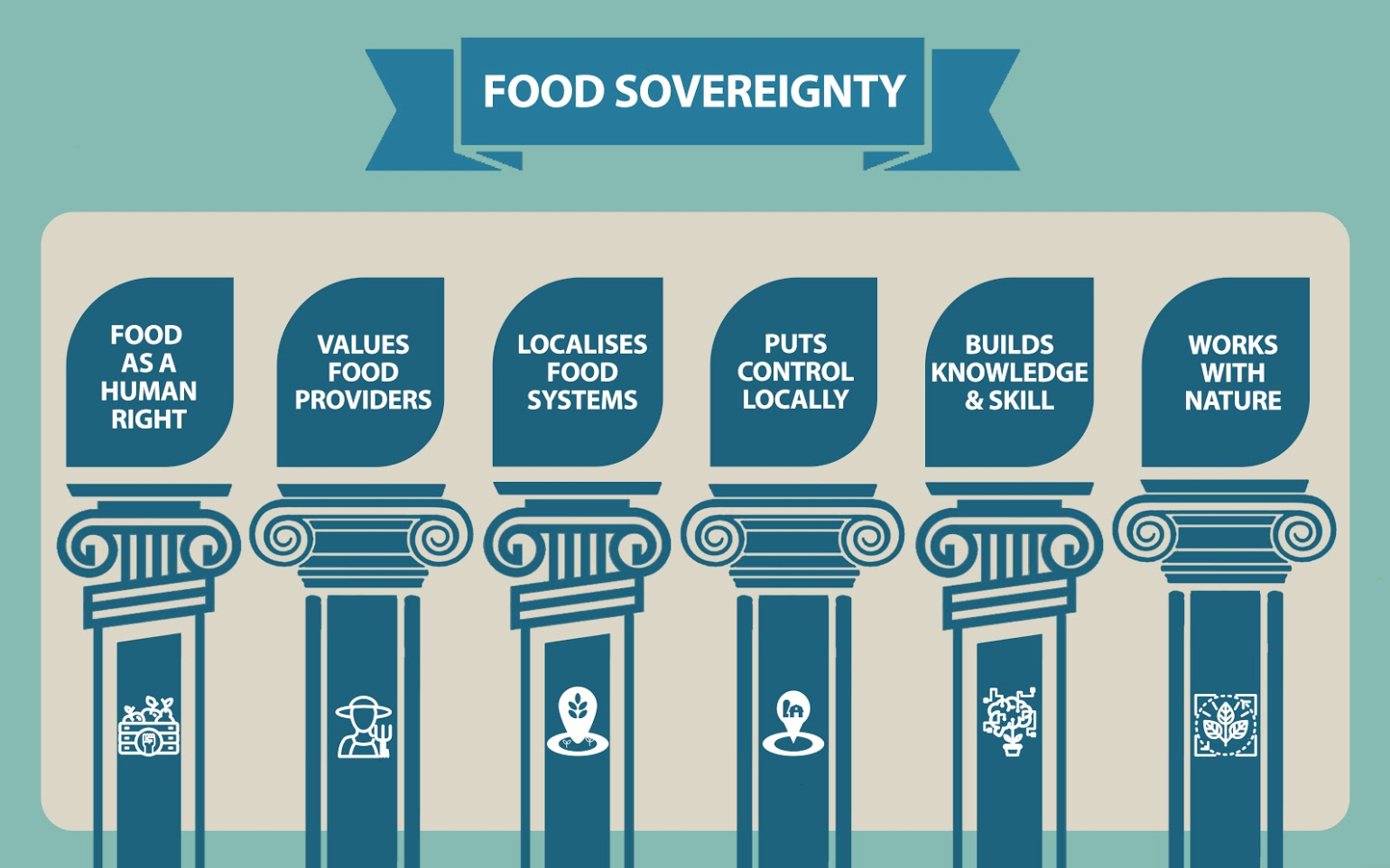Overview
Food and agriculture are often at the center of struggles regarding climate change, capitalism, poverty, and Indigenous struggles. The Indigenous and peasant communities are leading the way in sustainable, just, and equitable paths to food and agriculture.
Despite the industrial food web using up the most resources and producing the most emissions, they only actually produce ~30% of the world's food. Indigenous and peasant communities keep the world fed sustainably by only using a fraction of the resources to produce ~70% of the world's food.
Ensuring an equitable future for our food systems requires a global paradigm shift, away from industrialized agriculture towards regenerative, resilient, and just food systems grounded in Food Sovereignty.
Food sovereignty goes far beyond just providing food for everyone. It values cultural diversity, biodiversity, traditional knowledge, and addresses social justice and environmental degradation. Food sovereignty uses social mobilization to address massive widespread rural disintegration while also addressing the pressing issue of climate change. It aims to focus social and political actions on communities to promote local mobilization and cooperation on a regional, as well as on a much broader, geographic scale.
As a concept, food sovereignty was put forward at an international level by La Via Campesina at the United Nations Food and Agriculture Organization’s World Food Summit in 1996. In this summit LVC presented a set of mutually supportive principles that can ground local and global transitions towards an alternative just food system:

Source: Altieri, M. A., Nicholls, C. I., Henao, A., & Lana, M. A. (2015). Agroecology and the design of climate change-resilient farming systems. Agronomy for sustainable development. Design and edit by Christian Tandazo.
This section will provide resources to understand the role that capitalism and industrial agricultural actors have in exacerbating climate change, world hunger, Indigenous oppression, and exploitation of labor, as well as resources from frontline communities that fight against the injustices surrounding food and agriculture by either direct action or by serving as models of alternatives.